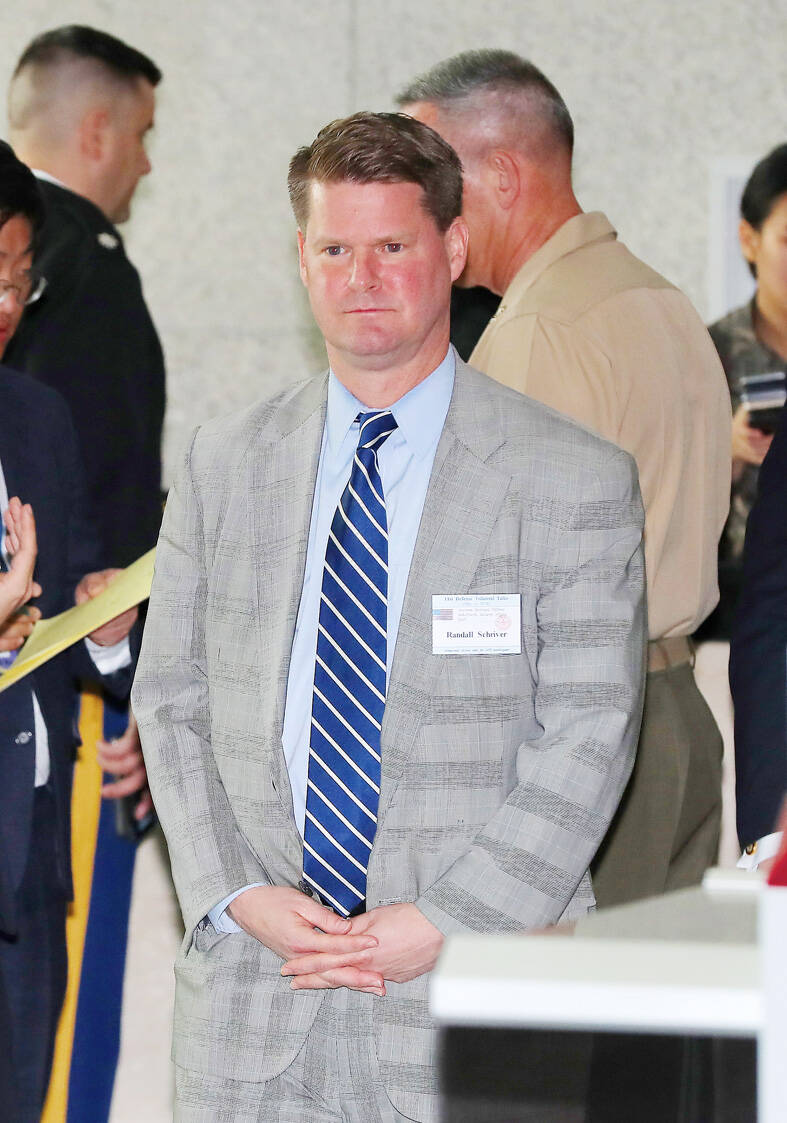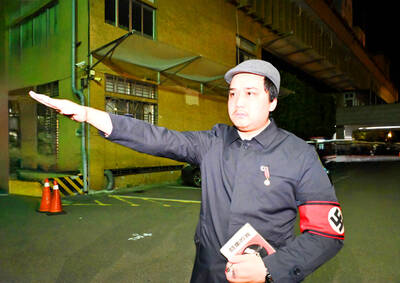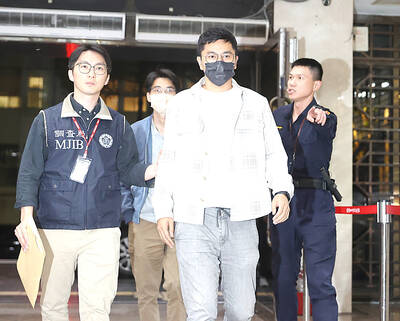Randall Schriver, former US assistant secretary of defense for Indo-Pacific security affairs, on Wednesday said that the US should “strengthen” training of Taiwan’s armed forces to help boost their combat readiness.
Schriver, now chairman of the board of the US think tank Project 2049 Institute, made the remarks during a Senate Foreign Relations Committee hearing as a witness when he was asked by US Senator Dave McCormick about his views on the US government’s efforts to deter a war in the Taiwan Strait.
Schriver said it has been an evolutionary process, in which the US has become more direct in language and rhetoric on the issue.

Photo: EPA-EFE
In addition, the US has been moving into areas that were previously too sensitive, such as the training of Taiwanese military forces, he said, adding that the US should enhance its initiatives in those areas.
“We need to strengthen our training of Taiwan military forces,” Schriver said. “That was a taboo for decades, and now we’re getting them to a point where they’re more professional, more proficient, as they’re placing a greater emphasis on training.”
As part of the cross-strait war deterrence strategy, the US should also encourage Taiwan to look at more modernized command and control that would help optimize battlefield decisions, given the changing nature of warfare, he said, adding that “they need to look at a lot more unmanned, autonomous and in every domain, including underwater.”
Schriver, who served as assistant secretary of defense for Indo-Pacific security affairs during US President Donald Trump’s first term in office, also said that the US needs to help develop the Philippines, particularly Northern Luzon, given its proximity to the Taiwan Strait.
The US military has been helping to train Taiwan’s military forces for decades, but has been doing so discreetly due to the sensitive nature of such actions.
In March last year, then-minister of national defense Chiu Kuo-cheng (邱國正) confirmed that US military personnel were being rotated to provide training to the armed forces in Taiwan, including conscripts, and Taiwanese soldiers were also receiving training in the US.
He did not give any specifics for security reasons.
Wednesday’s hearing in the US Senate was titled “Shared Threats: Indo-Pacific Alliances and Burden Sharing in Today’s Geopolitical Environment.”
Before the hearing began, US Senator Jim Risch, chairman of the Senate Foreign Relations Committee, said China’s rising aggression in the Indo-Pacific region should be confronted, “but America should not be the world’s only watchdog.”
“To counter Chinese aggression, we need our allies to work with us to ensure each of us is strong and capable of pushing back,” he said, calling for allies to “expand US basing and overflight access” around the Indo-Pacific region.
“The best way to show China that we stand together is if we are physically present in the region,” Risch said.
Risch also said that Taiwan must continue to increase its defense spending.
However, Schriver said that people should not become focused on accounts and numbers.
While Taiwan’s defense spending only comprises 2.5 percent of its GDP, its investment in resilience of power, communications and civil defense has not been considered, he said, adding that Taiwan should be recognized for these efforts.
Citing the Philippines, Schriver said that while the nation only spent 1.5 percent of its GDP on national defense, it has allowed the US to establish bases and strategic facilities under the Enhanced Defense Cooperation Agreement.

Seventy percent of middle and elementary schools now conduct English classes entirely in English, the Ministry of Education said, as it encourages schools nationwide to adopt this practice Minister of Education (MOE) Cheng Ying-yao (鄭英耀) is scheduled to present a report on the government’s bilingual education policy to the Legislative Yuan’s Education and Culture Committee today. The report would outline strategies aimed at expanding access to education, reducing regional disparities and improving talent cultivation. Implementation of bilingual education policies has varied across local governments, occasionally drawing public criticism. For example, some schools have required teachers of non-English subjects to pass English proficiency

‘FORM OF PROTEST’: The German Institute Taipei said it was ‘shocked’ to see Nazi symbolism used in connection with political aims as it condemned the incident Sung Chien-liang (宋建樑), who led efforts to recall Democratic Progressive Party (DPP) Legislator Lee Kun-cheng (李坤城), was released on bail of NT$80,000 yesterday amid an outcry over a Nazi armband he wore to questioning the night before. Sung arrived at the New Taipei City District Prosecutors’ Office for questioning in a recall petition forgery case on Tuesday night wearing a red armband bearing a swastika, carrying a copy of Adolf Hitler’s Mein Kampf and giving a Nazi salute. Sung left the building at 1:15am without the armband and apparently covering the book with a coat. This is a serious international scandal and Chinese

TRADE: The premier pledged safeguards on ‘Made in Taiwan’ labeling, anti-dumping measures and stricter export controls to strengthen its position in trade talks Products labeled “made in Taiwan” must be genuinely made in Taiwan, Premier Cho Jung-tai (卓榮泰) said yesterday, vowing to enforce strict safeguards against “origin laundering” and initiate anti-dumping investigations to prevent China dumping its products in Taiwan. Cho made the remarks in a discussion session with representatives from industries in Kaohsiung. In response to the US government’s recent announcement of “reciprocal” tariffs on its trading partners, President William Lai (賴清德) and Cho last week began a series of consultations with industry leaders nationwide to gather feedback and address concerns. Taiwanese and US officials held a videoconference on Friday evening to discuss the

PERSONAL DATA: The implicated KMT members allegedly compiled their petitions by copying names from party lists without the consent of the people concerned Judicial authorities searched six locations yesterday and questioned six people, including one elderly Chinese Nationalist Party (KMT) member and five KMT Youth League associates, about alleged signature forgery and fraud relating to their recall efforts against two Democratic Progressive Party (DPP) legislators. After launching a probe into alleged signature forgery and related fraud in the KMT’s recall effort, prosecutors received a number of complaints, including about one petition that had 1,748 signatures of voters whose family members said they had already passed away, and also voters who said they did not approve the use of their name, Taipei Deputy Chief Prosecutor